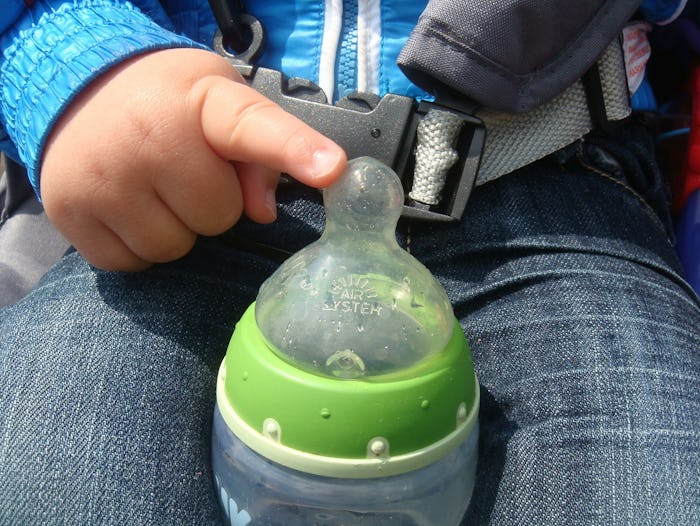Whether you use breast milk or formula, at some point you might use a bottle to feed your little one. But, if you're anything like I was when I first became a parent, you want to make sure your baby is as safe and healthy as possible. So, that means you've probably wondered about how to clean a bottle so you wash away all the germs, since you want to protect your infant from any pesky microbes. Is there a happy compromise between scrubbing nipples and rings for what seems like an eternity and just letting things go?
A friend of mine with three children had opted to toss her babies' bottle parts into the dishwasher since it seemed to be a quicker, easier option. She noticed, though, that the nipples began to wear out faster. That's why Baby Center recommended checking if your baby's bottle is dishwasher safe.
But don't fret is the dishwasher isn't an option. If your little one's bottles aren't suitable for the dishwasher or you just don't have the time to wait for a full load to finish, there are other cleaning methods. According to Parents, "soaking bottles in a big pot of clean, boiling water for about five minutes works just as well." Remember, as my pediatrician pointed out to me, don't perform these kinds of tasks while baby-wearing since steam and hot water could harm them.
This may seem like too much of a hassle, especially for a mom who is trying to do it all. But it's actually worth it. According to the United Kingdom's National Health Services (NHS), sterilization of your baby's bottles protects them from harmful germs that could lead to infection and stomach upset, among other things. Thankfully, you don't have to be on disinfecting duty forever. As the Australian Department of Health's organization, Pregnancy, Birth, and Baby, noted, your baby will develop their own antibodies around 1 year of age. Before then, their immune system isn't mature enough to fight off the kinds of germs that would be harmless to an adult. So if your equipment is microwave- and dishwasher-safe, feel free to use that option. But if you prefer old-fashioned methods, a pot of boiling water will get rid of any germs.
